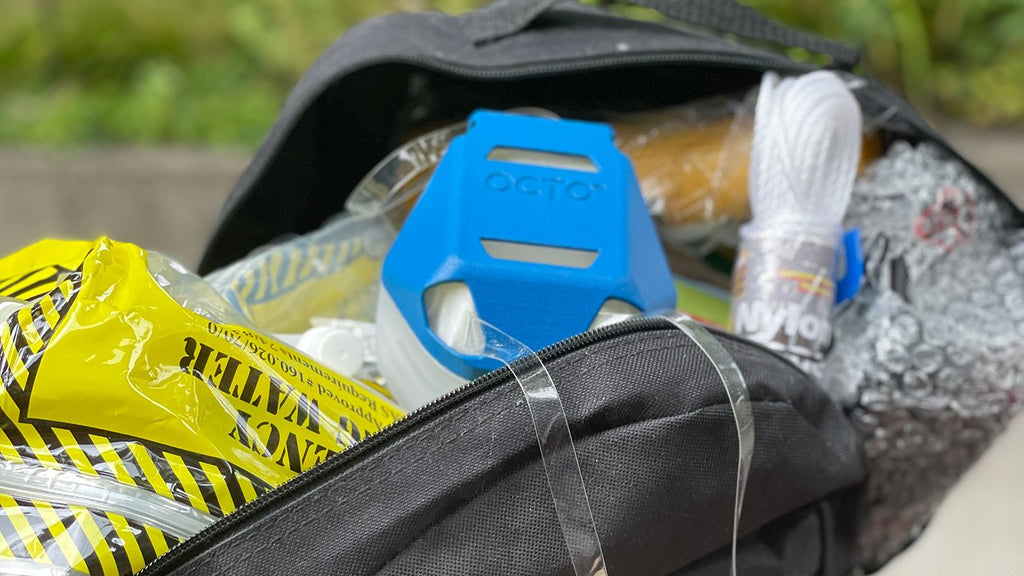Wildfire Preparation: How to Prepare for Wildfires
After years of social distancing and minding the COVID protocols, people are getting outside to reconnect with one another and with nature towards the goal of better health.
But what happens when the fresh air is polluted with particulates from nearby raging wildfires or factory smog? This time of year is also riddled with natural disasters ranging from tornados and hurricanes to floods and wildfires.
More frequent and intense wildfires are a growing public health concern, contributing to reduced air quality for humans. When wildfires rage, there is a significant drop in air quality as wildfires produce a range of harmful air pollutants and particulate matter, from known cancer-causing substances to tiny particles, that can aggravate existing health problems and increase the risk of heart attack or stroke.
Supplies for a Wildfire
Wildfire smoke particles are very small (diameters of 2.5 micrometers and smaller) and can get deep into the lungs and pass directly into the bloodstream. While cloth face coverings and masks offer protection against COVID-19 virus spread, they do not provide protection against wildfire smoke particles. Experts predict another challenging season, a desperate reality for some parts of the country again gripped by dangerous and fast-moving wildfires—particularly Oregon and California.

Photo credit: California Air Resources Board
The ability to move yourself and your loved ones to safety is critical, and having some essentials to sustain everyone while navigating emergencies is equally as important.
For those familiar with outdoor adventures, preparation is a mantra. Camping without proper gear can lead to disappointing memories, or worse, a trip that teeters on danger. At the same time, preparation is not exclusively for the great outdoors.
One way to prepare for the unexpected is to put together important, life-saving necessities and stow them in what emergency preppers have dubbed a “go-bag” or “bug out bag.”
When planning items for emergency supplies for a wildfire to put into your go-bag, try to keep contents as light as possible and include essentials tied to sustainability - air, water, food, shelter. Go-bags can be a medium-sized backpack or duffel within which contents can be packed and stored to help sustain life for at least three (3) days. The average person can only survive two to three days without water; therefore hydration should be considered a top priority, along with clean, breathable air.
OCTO® Respirator Mask (ORM) is the best mask for wildfire smoke. It's an affordable, reusable elastomeric respirator mask perfect for a go-bag as it has a 10-year shelf life and can be used, sanitized (boiling water) and reused over and over within that time span.
Significantly better than disposable face coverings and masks (which have caused significant pollution during the last year), OCTO® Respirator Mask (ORM) has been employed by firefighters and first responders as well as everyday users in the factory, construction, and medical industries. The filter material used in OCTO® Respirator Mask (ORM) shows > 97% efficiency against even the most penetrating particle size of 0.3 microns.
In addition to water and an OCTO® Respirator Mask (ORM), other items to consider including in your go-bag include:
- A LifeStraw. Should drinking water not be immediately available, this lightweight straw filters contaminants, silt, viruses, etc. from any natural water source and turns it into fresh, clean drinking water.
- Power bars or freeze-dried foods. Pack non-perishable, calorie-dense granola or power bars for quick energy in a small package or dried meals that are light and contain solid nutritional value.
- Tarp/Poncho: If leaving with only the clothes on your back, Sea to Summit’s eight-ounce Ultra -Sil Nano Tarp Poncho doubles as a two-person tarp shelter.
Understanding how to prepare for wildfire season is essential year-round for west coasters, but it’s highly critical during Great Outdoors Month. Learn more about how to get your hands on the OCTO® Respirator Mask (ORM), the best mask for wildfire smoke.
Other items to consider: Extra cash, eyeglasses, prescription medicine (request an emergency supply from your doctor or pharmacist and check bags regularly to replace medications and avoid issues with expiration), first aid kit, a multi-tool, headlamp or flashlight (check and change batteries regularly), toilet paper, hand or alcohol wipes, standard or solar cell phone charger, portable radio, and a map of the area. Finally, if you own pets, including supplies for safe keeping (portable water/food bowl, pet food and treats, ID tags) should also be included.
Emergency situations happen without warning, especially those tied to nature. Living in areas where natural disasters repeatedly occur make it even more important to prepare for the worst. Advance preparation helps reduce in-the-moment anxiety and is easily executed by creating a bug out bag.
See how OCTO® Respirator Mask (ORM) provides clean, non-toxic and breathable air.


